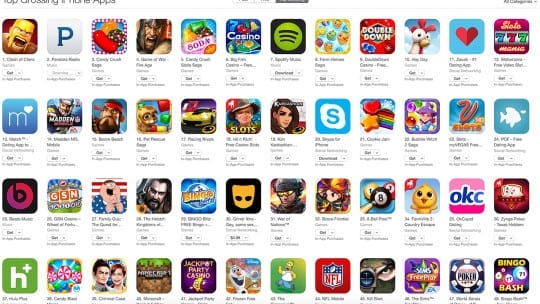
Increasing competition and a rapid shift in technology have made both the mobile app and journalism industries particularly volatile in recent years. Mobile app market saturation is at an all-time high, making it difficult for app creators to enter the industry and gain exposure. Meanwhile, the journalism industry is struggling with monetization as the advertising landscape evolves, being forced to re-evaluate the way it serves online content.
The above factors have made it particularly difficult for app startups to get media coverage. Today, app startups must take a targeted and creative approach with their media strategy and tactics if they hope to gain exposure during a launch.
A few months ago, I had the pleasure of speaking with two experts from the media industry: Cody Toombs, writer for the online app news website Android Police, and J.J. Colao, founder of tech PR firm Haymaker. Combined with my 4-plus years of experience running mobile app startups, here’s what I've learned:
Make sure your app solves a problem.
Across both the Apple App Store and Google Play Store, there are currently over 4.2 million apps. Many of these are similar to one another in the features they offer—even worse, some are complete clones.
“Make sure you have a product that actually solves a problem. Nobody wants to see another Flappy Bird clone. These aren’t products that are going to contribute any significance to the already-saturated app market...If you want to attract a journalist’s attention, you’ve got to bring something that’s a little new, unique or even just a much better version of something that already exists,” says Toombs.
Be well-prepared before launch.
Before launching your app to the press, it’s important to have all of your media assets and messaging complete and in a ready-to-send format. If a journalist asks for screenshots or a feature set, you need to be prepared to send it to them immediately, as journalists often run on very short deadlines.
An easy way to prepare your media and messaging is by creating a digital press kit. Think of a press kit as a pitch deck for journalists. It should be an easily digestible PDF containing the following sections:
- Overall company information (boilerplate, history and/or milestones)
- Press contact information and links to social media
- Key features of your product(s)
- Product images/screenshots
- Team/executive biographies
- FAQ section
During this time, make sure that you have ready an initial media target list of the websites you’d like to cover your app, along with their journalists’ most up-to-date contact information.
Cision and Muckrack are great PR tools to use for finding journalists' contact information, but they’re expensive and sometimes outdated. As an early-stage app startup, start by using free tools like Google, LinkedIn and Twitter, and leveraging their advanced search features. Also, be sure to check a publication’s masthead directly on its website for the most up-to-date contact information. No PR tool is ever as accurate as doing manual research (as time consuming as it can be). And low-cost tools like Voila Norbert and Email Hunter can help you cut down on research time by searching the web for contact information and giving you suggested email addresses of your selected companies.
Be sure to remember that you are contacting journalists who are well-versed in the industry of your app. You wouldn’t want to contact a journalist who specializes in writing about health care startups when your app is in the entertainment category.
Have a story worth talking about.
Don’t expect a journalist to write about your app just because you give them an exclusive cover. They receive dozens of pitches every day, so it’s important that you have a creative story to go alongside your pitch.
“With any type of coverage, there has to be a story. Think about what’s interesting and valuable about your app. Is it the technology? Is it the fact that you have X number of users, or that you’re the first person to do Y? When offering an exclusive, provide something inherently interesting to the reporter,” says Colao.
Hiring a PR firm is a great way to help you develop newsworthy stories for your app; just make sure you hire one that is well versed and successful within the app industry. “Contacting press through PR is great because it takes a lot of work off of you as an entrepreneur, but just make sure they’re not making it harder for your app to gain traction,” says Toombs.
Be flexible with the press.
When approaching journalists, you might have a specific story in mind that you want them to cover. Unfortunately, it doesn’t always work out this way. For instance, the journalist might have a different angle in mind to align better with the current month’s editorial calendar topics, or they could be on tight deadline, looking for just a simple quote.
For these reasons, it’s important to be flexible with journalists and to expect the unexpected. Be ready for things like interviews, sharing of certain data points or a demo/walkthrough of your app. If a journalist is being responsive and willing to provide coverage in one form or another—as long as it isn’t negative—take this as a very good sign, and provide whatever reasonable information is necessary to get the story published.
Conclusion
Reaching out to press about your app and getting little to no response can be very disheartening. Perseverance and a willingness to reevaluate your strategy with new, creative ideas are key components to getting covered by the media.
Amy Kadomatsu is president of ROKO Labs.
